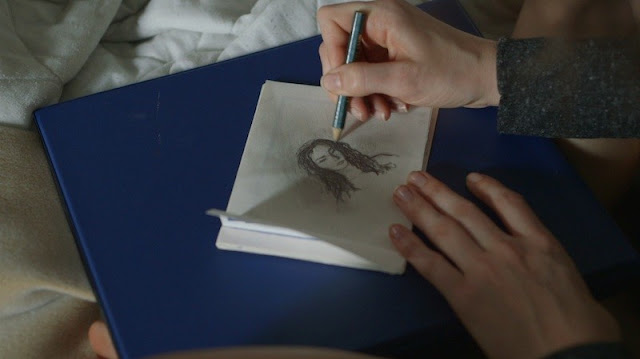 |
| Still from There Is a New World Somewhere |
Our film is centered around Sylvia, a troubled young woman. Sylvia struck out from her small town roots in Texas to try her luck in New York City. Why New York? Well, I think E. B. White said it best:
Many of [NYC’s] settlers are probably here to merely escape, not face, reality. But whatever it means, it is a rather rare gift, and I believe it has a positive effect on the creative capacities of New Yorkers – for creation is in part merely the business of forgoing the great and small distractions.” –from E. B. White’s Here Is New York
 |
| Still from There Is a New World Somewhere |
Sounds like a dreamy escape, doesn’t it? Travel, for most, is the highest form of escapism. Vacations take you away from the monotony of the daily grind and are the only allotted times when we are allowed to shut that phone off 100%.
This kind of “escapism” is tied to a kind of forgetting or relaxation, but what happens when the act of letting go becomes a euphemism (or “excuse” instead of euphemism) for burying deeper problems at bay? Sylvia, our heroine, takes escapism to the absolute extreme – she literally runs away into the unknown to avoid facing her own shortcomings. It’s an intimate portrayal of a young woman at the sobering, pivotal moment when she must choose to continue to try or to retreat completely. I’m sure everyone has had that moment when you ask yourself: At what point do my dreams begin to hurt me?
 |
| Still from There Is a New World Somewhere |
This is where the road comes in. Roadtrips are amazing. They give the explorer the freedom to experience and connect with different people and places along the way. There is no itinerary other than the time you allow yourself to become lost within it.
So is this kind of escapism “bad”? Is it selfish? Why does this term connote a negative, judgmental tone?
Ultimately, no. I think it’s necessary to detach from our obligations and get lost for a while, even if it hurts the ones we love. As human beings (let alone professional creatives), we forget that inspiration is the key element to everything that we do. In all honestly, forcing creativity is the crux of the problem. I recently picked up a book called Daily Rituals: How Artists Work to try to see how my heroes did it. The ultimate conclusion? Practice makes perfect, but you can’t rush it. Although Sylvia ditches her friends for a random stranger, she is choosing to embark on a journey of self-discovery, even if she did so unconsciously. And she has to hope that her friends can understand and love her all the same.
 |
| Still from There Is a New World Somewhere |
All in all, the story of TIANWS and its journey to getting made has clearly been an introspective one. Putting this process out there for all to see is scary as shit. But when I feel this vulnerable, it usually means I’m doing something right.
Here’s to going for it.
To all the roads ahead,
Li

11 thoughts on “Travel Films Week: Finding a Brave ‘New World’”
Comments are closed.